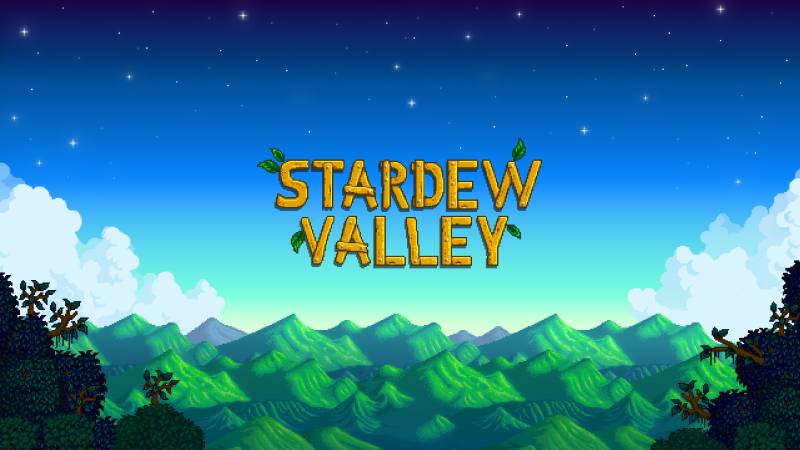
Stardew Valley Nintendo Switch
Joshua BrunhoffExploring Stardew Valley: A Deep Dive Into the Popular Farming Sim
In the world of indie games, few titles have reached the heights of success and acclaim as Stardew Valley. Launched in 2016, this farming simulator has captivated millions with its charming art style, immersive gameplay, and heartwarming storylines. Whether you’re tending to crops, befriending quirky villagers, or exploring mysterious caves, Stardew Valley offers a relaxing yet engaging experience for players of all ages. But what makes this game so special? In this blog post, we’ll delve into the who, what, when, where, why, and how of Stardew Valley, exploring its gameplay, community, and significance in the gaming world.
The Who, What, When, Where, and Why of Stardew Valley
Who: The Creator and the Players
Stardew Valley was created by Eric "ConcernedApe" Barone, an indie developer who single-handedly designed, programmed, and produced the game. Barone, a lifelong fan of farming sims, particularly Harvest Moon, decided to make a game that would embody the spirit of those classics while also offering something fresh and personal. After years of working on the project by himself, Barone finally released Stardew Valley in February 2016.
The game has since garnered a massive player base across multiple platforms, including PC, consoles, and mobile devices. Stardew Valley appeals to a wide range of gamers: from casual players looking for a peaceful escape to hardcore fans who enjoy the game's deep systems and intricate social mechanics.
What: A Farming Simulation Game
At its core, Stardew Valley is a farming simulation game, but it is much more than that. Players inherit a dilapidated farm in a small town and are tasked with revitalizing it by planting crops, raising animals, mining for resources, fishing, and building relationships with the townspeople. The game combines elements of resource management, exploration, and RPG mechanics to create an engaging and well-rounded experience.
Unlike many farming sims, Stardew Valley also includes dungeon-crawling and combat elements. The nearby mines are filled with monsters and precious resources that can aid you in your farming endeavors. There's also a robust system of festivals, quests, and events that make the world feel dynamic and alive.
When: The Rise of Stardew Valley
Stardew Valley was released on February 26, 2016, initially for PC. The game’s success was almost immediate, with players praising its engaging gameplay, soothing atmosphere, and charming pixel art. It was later ported to other platforms, including PlayStation 4, Xbox One, Nintendo Switch, and mobile devices. The game has also seen regular updates, with significant content patches that introduce new features like new crops, animals, and locations.
Where: A Small Town Called Pelican Town
The game takes place in a fictional rural town called Pelican Town, which is surrounded by lush forests, caves, and rivers. The player's inherited farm sits just outside the town. The game world is expansive and filled with opportunities to explore. From the colorful festivals held in town to the mysterious caves filled with creatures and treasures, Stardew Valley provides players with a vast world to discover.
The environment plays a key role in the game’s relaxing atmosphere, with seasons changing, weather patterns influencing farming, and various hidden secrets to uncover. It’s a place where players can escape from the hustle and bustle of the real world, find peace, and immerse themselves in nature.
Why: The Appeal of Stardew Valley
The enduring appeal of Stardew Valley lies in its ability to combine relaxation and productivity. Unlike more action-oriented games, Stardew Valley allows players to set their own pace. There’s no set agenda or rush—players can spend their days farming, socializing, or exploring at their own leisure. This freedom, combined with its deep mechanics and personal touch, makes the game endlessly replayable.
The sense of community in the game also plays a major role in its popularity. Players can form bonds with the colorful characters of Pelican Town, completing quests, exchanging gifts, and even starting families. The variety of activities, from cooking to fishing, offers something for every type of player, making it a game that can be enjoyed for years.
How to Play Stardew Valley
1. Starting Your Farm
When you first begin Stardew Valley, you inherit a rundown farm from your grandfather. Your initial task is to clear out the debris, plant crops, and start building your farm from the ground up. You start with basic tools—such as a watering can, hoe, and axe—and can gather resources like wood, stone, and ores to upgrade your equipment and buildings.
The main currency in the game is gold, which you earn by selling crops, fish, and other items. You'll need gold to buy seeds, upgrade your tools, and expand your farm. Keep an eye on the in-game calendar to plan your planting around the different seasons, as certain crops can only grow in specific seasons.
2. The Seasons and Crop Management
Stardew Valley operates on a seasonal cycle, with each season lasting 28 days. Every season brings a different set of crops, animals, and activities. For example, in spring, you can grow crops like strawberries and potatoes, while in summer, you can plant blueberries and melons. You’ll also need to prepare your farm for the next season by clearing out debris and planting the appropriate crops.
The changing seasons also affect the weather. Rainy days mean you won’t need to water your crops, while sunny days can lead to droughts. Understanding the dynamics of the seasons is key to maximizing your farm's productivity.
3. Building Relationships
Beyond farming, Stardew Valley offers a rich social aspect. There are over 30 villagers to interact with, each with their own unique personalities, preferences, and backstories. You can befriend them by giving gifts, completing tasks for them, and attending festivals and events. Building relationships can lead to marriage and starting a family, which can provide benefits like additional help on the farm.
Some villagers offer unique quests that provide rewards, while others will become close friends or even potential romantic partners. The game encourages you to learn more about these characters through dialogue and special interactions.
4. Combat and Exploration
In addition to farming, Stardew Valley has a dungeon-crawling aspect. The Cinderapool Mines, located north of Pelican Town, are filled with monsters and valuable resources like ores and gems. As you progress deeper into the mines, the difficulty increases, with tougher enemies and more challenging environments. Combat is simple but rewarding, and the resources you gather can be used to upgrade your tools and farm.
Exploring the mines is optional, but it adds an exciting element to the game and provides a welcome break from the peaceful farming life.
The Stardew Valley Community
One of the standout features of Stardew Valley is its incredibly passionate and active community. The game’s community is not only large but incredibly dedicated, with fans creating mods, fan art, and even fan-made stories inspired by the game. Online forums, social media platforms, and streaming services like Twitch have allowed players to connect and share their experiences.
The modding community in particular has been a major driving force behind the game's longevity. Mods can enhance everything from visual aesthetics to gameplay mechanics. For example, some mods add new characters, while others expand on the farming experience or provide additional quests and locations. The ability to customize the game has helped keep the community engaged for years after the game's release.
Additionally, the game’s inclusion of cooperative multiplayer (introduced in a free update in 2018) has brought players together to farm side by side with friends. This multiplayer feature allows up to four players to work together on a farm, share resources, and experience the world of Pelican Town in a cooperative setting.
The Stardew Valley community is often described as welcoming and supportive, with players regularly offering tips, sharing their achievements, and celebrating milestones together. The sense of community is one of the game's strongest aspects and contributes to its lasting popularity.
Glossary of Stardew Valley Terms
- Gold: The in-game currency used to buy seeds, upgrades, and items.
- Crops: Plants that can be grown on your farm, each corresponding to a specific season.
- Villagers: The residents of Pelican Town, each with their own personalities and stories.
- Mining: A dungeon-crawling aspect of the game where players explore caves to gather resources and fight monsters.
- Farm Buildings: Structures that can be built on your farm, such as barns, coops, and sheds.
- Animal Husbandry: The care and breeding of farm animals, such as cows, chickens, and goats.
- Fishing: An activity where players can catch various types of fish in lakes, rivers, and the ocean.
- Crafting: Creating items from resources like wood, stone, and ores, used for farming, building, and upgrades.
- Social Heart Events: Special interactions that unlock deeper relationships with villagers, including potential romantic partners.
- Co-Op Multiplayer: A feature that allows multiple players to farm together on the same farm.
Stardew Valley is more than just a farming simulator—it’s a deeply immersive experience that allows players to build, explore, and connect with others. Whether you're managing crops, mining for resources, or fostering relationships with townsfolk, the game offers a wealth of activities and opportunities. With its charming art style, relaxing pace, and rich world, Stardew Valley has earned its place as one of the most beloved indie games of all time. It’s a perfect example of how simplicity and depth can come together to create something truly magical.














